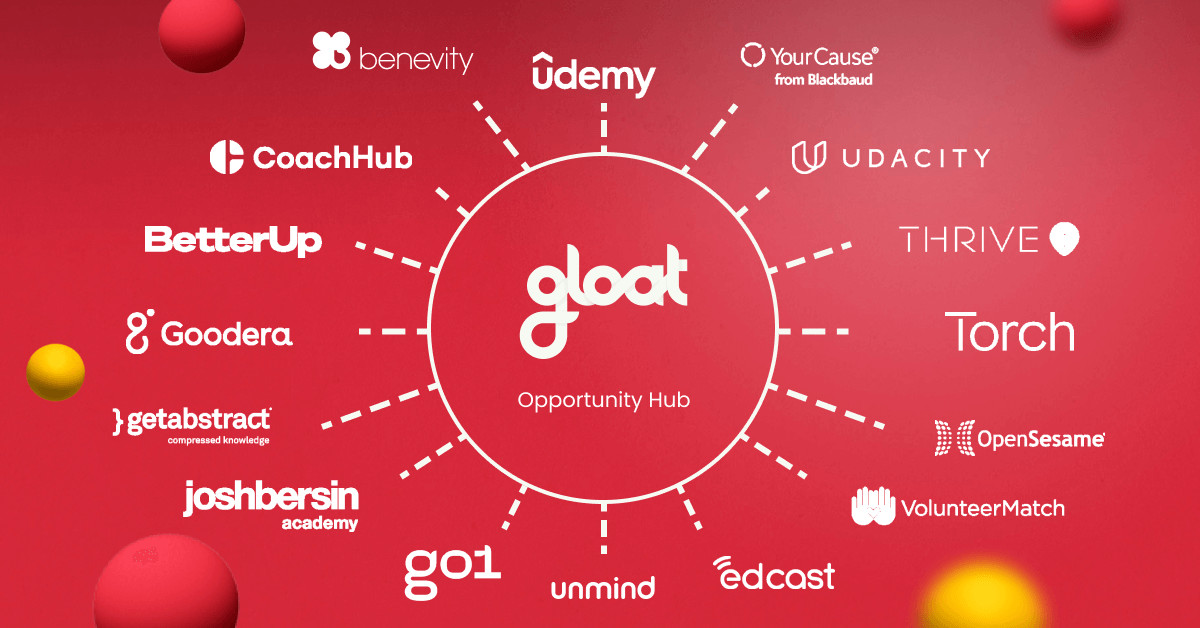Why horizontal growth is the key to a high-performing workforce
It’s time to look beyond linear career ladders and embrace all directions of growth

For a long time, most career ladders looked more or less the same. Employees were expected to start as junior-level associates and climb the ranks, working their way up to roles in management, and eventually leadership. Most professional development paths followed a similar vertical route, regardless of the industry employees were in and the goals they wished to achieve.
Today, career progression is getting shaken up. While some employees might choose to stick with vertical paths, others are expanding their horizons by exploring opportunities in other areas of the business, also known as horizontal growth.
As more people embrace non-linear career paths, businesses are starting to reap the benefits. Namely, horizontal growth empowers employees to build a broad range of capabilities, which leaders can tap into to overcome new challenges as they arise. And now that every organization is in a race to build skills, horizontal growth has secured its status as a top priority in the new world of work.
What is horizontal growth?
Horizontal development refers to building new skills, knowledge, and competencies without changing how a person thinks. It expands what someone knows or can do, such as learning tools, techniques, or procedures, but does not alter their mindset or level of thinking.
One way to think about horizontal growth is by taking a look at a T-shaped talent model, in which the vertical bar represents an employee’s depth of skills and the horizontal bar depicts a range of skills. During vertical growth, an employee might prioritize upskilling to lengthen the vertical base of the T. In contrast, employees who are interested in growing horizontally will need to focus on reskilling (moving that vertical line entirely) and cross-skilling (elongating the horizontal top of the T).
If horizontal growth doesn’t sound familiar, it’s most likely because it wasn’t something that leaders traditionally prioritized. Yet, it’s now become a game-changer in an organizational landscape that requires agility, rather than stability. When employees develop skills across multiple areas of your business, it will become easier to rapidly redeploy talent as priorities shift and challenges emerge.
Horizontal versus vertical career growth
Horizontal and vertical career growth have a few things in common—as well as a handful of key differences. Both types of career progression require employees to expand their skill sets and put their capabilities to use in new and exciting ways. They can also go hand-in-hand; for example, an employee who grows horizontally may develop the broad range of skills needed to take on a higher-level position, ultimately leading to a vertical career move.
The key difference between vertical and horizontal growth is the types of skills employees must develop. Someone who wants to grow their career vertically will need to deepen their expertise in the functional area they’re already pursuing, while employees who wish to grow horizontally must develop new and complementary capabilities. Generally, vertical growth is more about upskilling while horizontal development hinges on reskilling and cross-skilling.
5 benefits of Horizontal Career Growth
Horizontal growth is a win-win that will benefit both employees and your business. Some key advantages include:
#1. Enhanced skill-building
When employees explore other areas of your organization, they gain institutional knowledge and build a new set of skills that your entire company can tap into. These workers will pass along some of the expertise they’ve developed to their colleagues and collaborators, in turn allowing them to continue growing their careers as well.
#2. Innovation and creativity
Employees who develop a broad range of skills will be able to use this cross-functional knowledge to tackle some of your organization’s toughest challenges. With an in-depth understanding of how various teams and processes work, these people will be best equipped to brainstorm innovative solutions that draw on their rich experience and unique perspectives.
#3. Career flexibility
Shifts in consumer demands and rapid pivots are a hallmark of our Post-Industrial era of work. As skill and job needs quickly change, employees must develop a broader range of skills to ensure they stay relevant. People who participate in horizontal growth opportunities will have a range of capabilities that can be applied to a varied list of opportunities, in turn paving the way for long-term employability.
#4. Increased retention rates
Horizontal growth can help improve your company’s churn rates since people won’t feel like they need to leave your organization to try something new. As talent landscapes grow more competitive and skill shortages reach crisis levels, a retention boost is something every business could use.
#5. Potential for future growth
Non-linear career development opportunities open your employees’ eyes to new kinds of work that may be a better fit for their skills and interests. Once employees begin participating in projects and gigs in different areas of your business, they may discover that these opportunities are more meaningful to them and better aligned with their long-term goals. Rather than leaving your organization or remaining pigeonholed in one unit of your business, these employees can continue growing their careers with your company.
3 steps leaders can take to encourage horizontal growth
Given its widespread benefits, it’s easy to understand why many organizations are turning their attention toward horizontal growth. If you want to improve non-linear career progressions at your organization, here are a few steps you need to take:
#1. Swap talent hoarding for talent sharing
Talent hoarding and horizontal growth can’t exist in the same organization. If your managers are possessive of their high-performing employees, these workers might feel like they’re trapped into staying with their current team or department. Over time, hoarded talent comes to believe that their best chance of pivoting their careers lies outside of your organization, causing them to disengage.
In contrast, managers who promote talent sharing benefit from teams that are inspired to achieve their full potential. And their team members take confident ownership of their career development and pursue both horizontal and vertical growth opportunities—ones that align with their goals and your business priorities.
#2. Prioritize mentorship
The right approach to mentoring can empower employees to consider all types of career development, including horizontal growth. Rather than pairing mentees to mentors who hold more senior roles on their team, the most impactful initiatives match people based on their career ambitions and the skills they want to learn.
In the past, mentorship matching was a cumbersome process. Leaders needed to map out their participants’ competencies and goals and make relevant pairings manually. But now that talent marketplaces are gaining momentum, this heavy-lift is no longer necessary. The platforms match employees with similar interests and ambitions near-instantaneously, so leaders can debut a mentoring program that powers horizontal growth at scale.
#3. Put employees in control of their career progression
There’s no such thing as a one-size-fits-all career path. Your people each have their own ambitions, skills sets, and goals for the future—and they’re the ones who know what they’re looking for best. So instead of expecting them to follow along on prescribed career paths, why not encourage them to seek out opportunities that align with their goals and your business priorities?
The newest career pathing tools use employees’ profile information to generate various paths their careers can take. Once people have full visibility into their potential growth opportunities, they can sit down with their manager and align on a path forward that benefits everyone involved.
While there’s still a lot of uncertainty about the new world of work, it’s clear that linear progression is no longer the only direction that employees’ careers can take. To learn more about how to approach employee development in the next chapter, check out our guide, Unlocking Career Agility: from ladders to lifelong reinvention.






